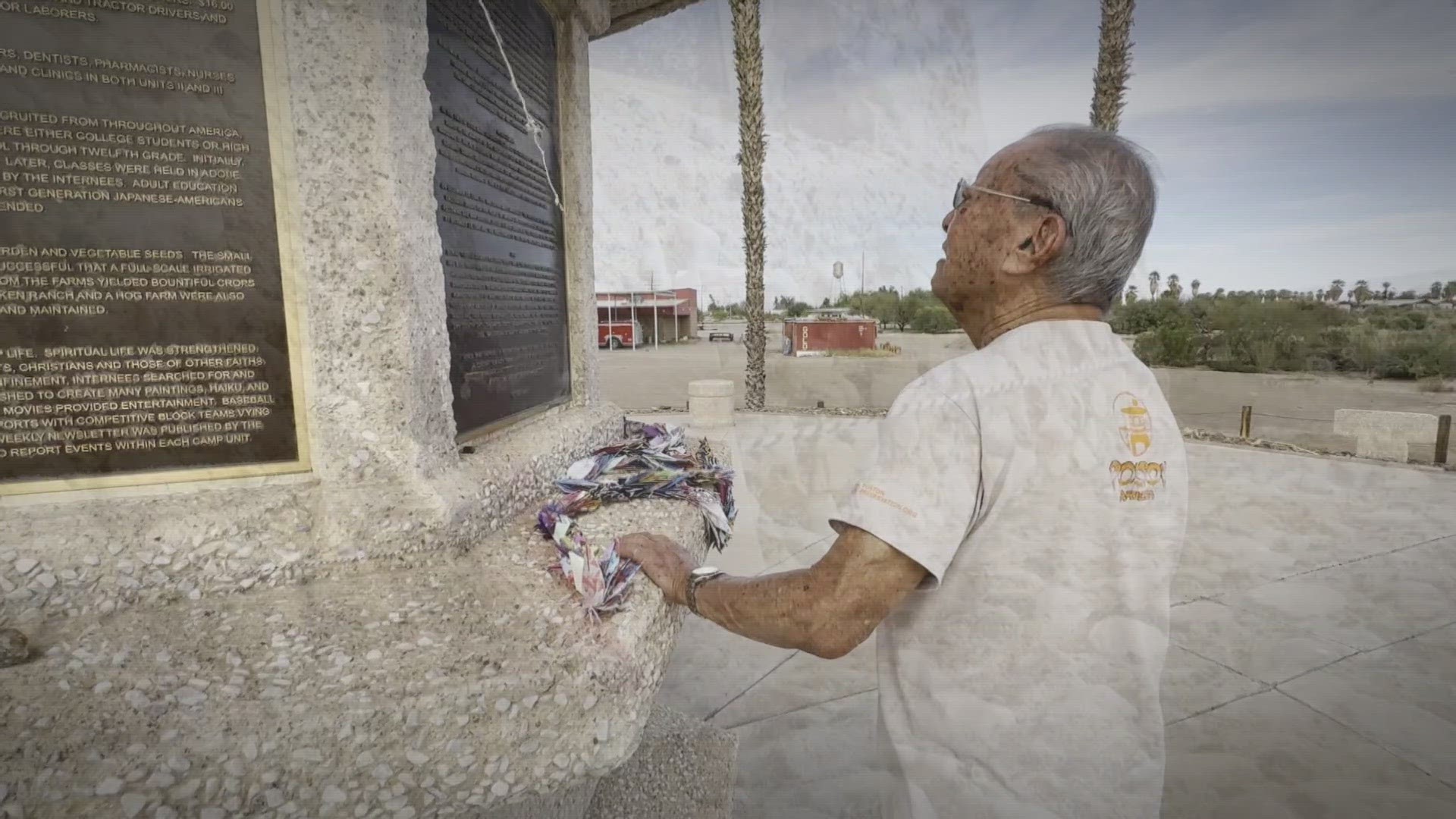PARKER, Ariz. — Arizona's second-largest city used to stand in a desolate stretch of desert on the Colorado River. It popped up nearly overnight and vanished three years later.
It was the Poston War Relocation Camp, and it was one of the two incarceration camps in Arizona that Japanese American citizens were sent to after the bombing of Pearl Harbor on Dec. 7, 1941.
They were two of the largest incarceration camps in the nation. Poston held nearly 18,000 Japanese Americans and the other, Gila River, held more than 13,000, according to the National Park Service.
RELATED: Remembering Arizona's role in the WWII mass incarceration of Japanese-Americans, 80 years later

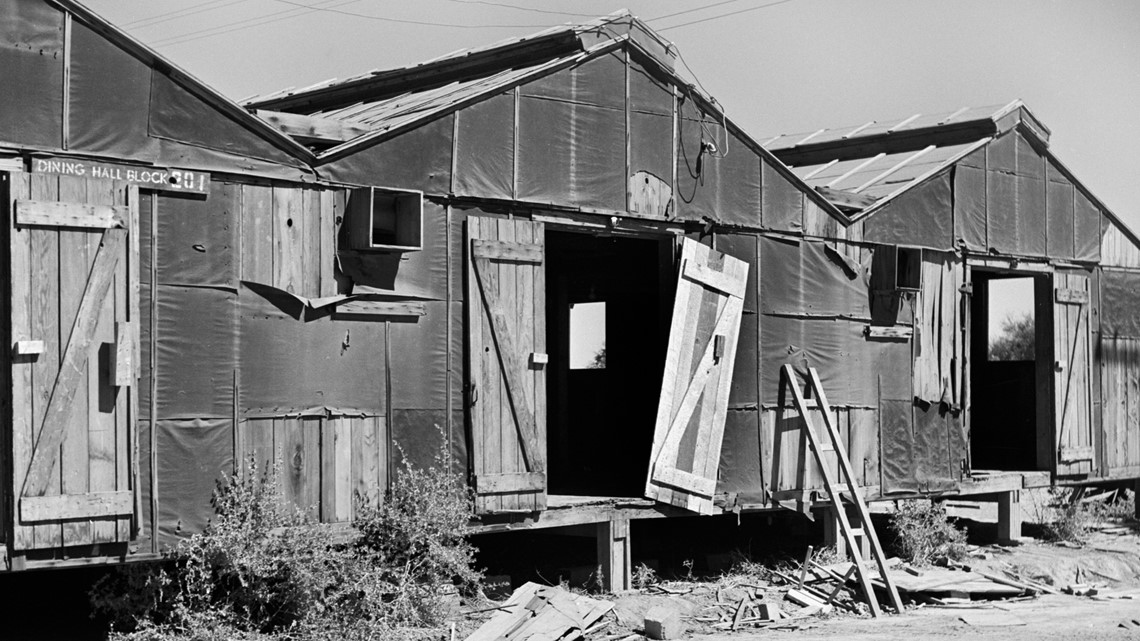
One of those imprisoned was Dick Matsuishi, a California-born Japanese American citizen who spent years of his childhood in Poston.
"Well, again, I'm looking back at what happened," he said, "And as an adult, I'm wondering how this could have happened."
Matsuishi was only 4 years old in February of 1942 when President Franklin D. Roosevelt issued Executive Order 9066. It was meant to calm the fears of millions of Americans in the wake of Pearl Harbor. In reality, it rounded up thousands of Japanese Americans, forced them to sell their homes and businesses, and bussed them to detention camps across the West.
Matsuishi and his family were taken to the Poston Camp on the Colorado River Indian Reservation near Parker, Arizona.

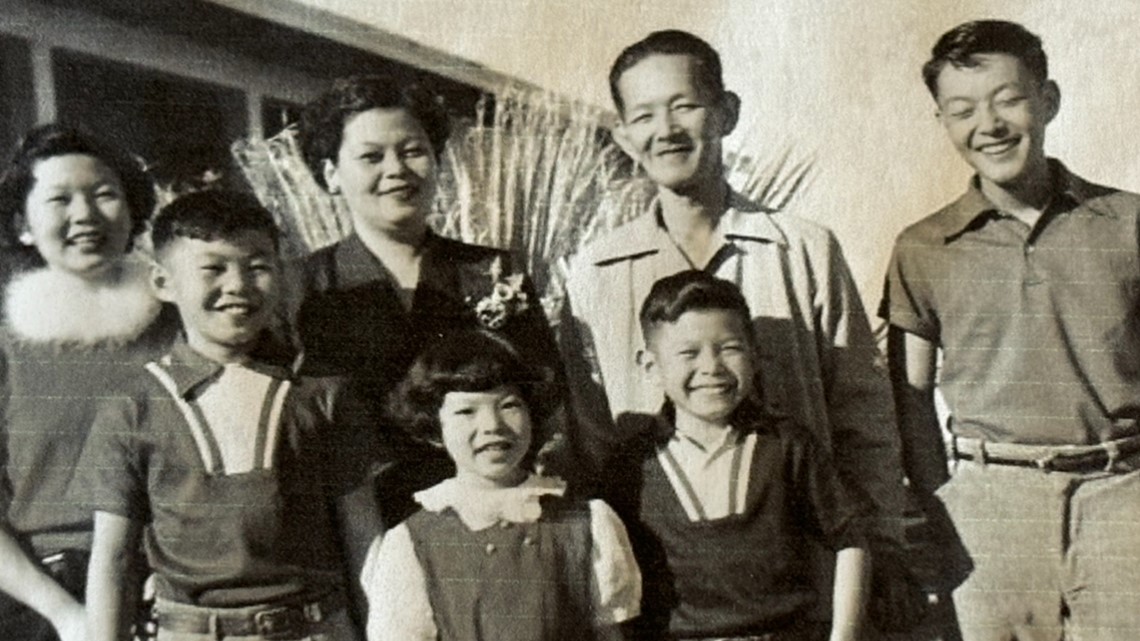
"It was war, hysteria, prejudice. Prejudice, and lack of political leadership," Matsuishi said of the decision. "I think that's probably one of the major ones — lack of political leadership should have never happened."
If you look around what's left of the camp, you can't help but hear the footsteps of people gathered there, feel the confusion of the men, women and children suddenly confined — All of them wondering how their country could do that to them. More than two thirds of the 110,000 people imprisoned were born American citizens. Many lost everything.
RELATED: The cost of a line: How Grand Avenue determined who did and didn't go to Japanese internment camps

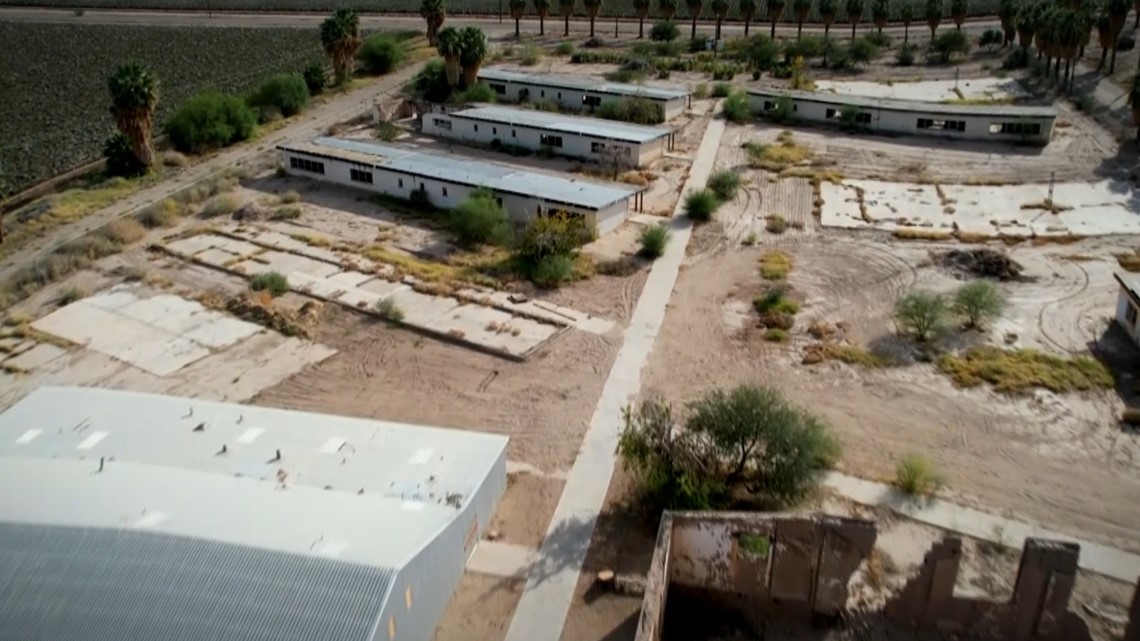
But Matsuishi was only a child when he arrived in the camp.
"While looking back, I had a ball. Because I was young, I didn't know what was going on. I did what my parents told me to do. I played with parentless kids that weren't my same ethnicity. And we had a good time, because we didn't know any better," he described.
Months came and went, years passed, and Matsuishi kept growing. All the while, his family was guided by a simple Japanese belief.
""There's a term called shikata ga nai," he explained. "If something happens that you have no control over, you try to do the best you can with what you have."
The camp persisted until June of 1946 when President Harry Truman issued another executive order allowing all of the imprisoned citizens to go home. But the vast majority had nothing to go back to and had to start over.
"There are a few that are bitter. They will never forget what happened, and never forgive their government for doing it. But I think most of us think, 'Hey, it's in the past. It's gone. Just make sure it doesn't happen again.'"
Matsuishi returned home to Southern California where he enrolled in school, and eventually became a dentist. There he married the love of his life.
"It's been a good life. I met my wife, who's from Arizona, and that's home here. And we've had a good life. We've got three girls, and we've got five grandchildren. And we're pretty close. And they're all doing good."

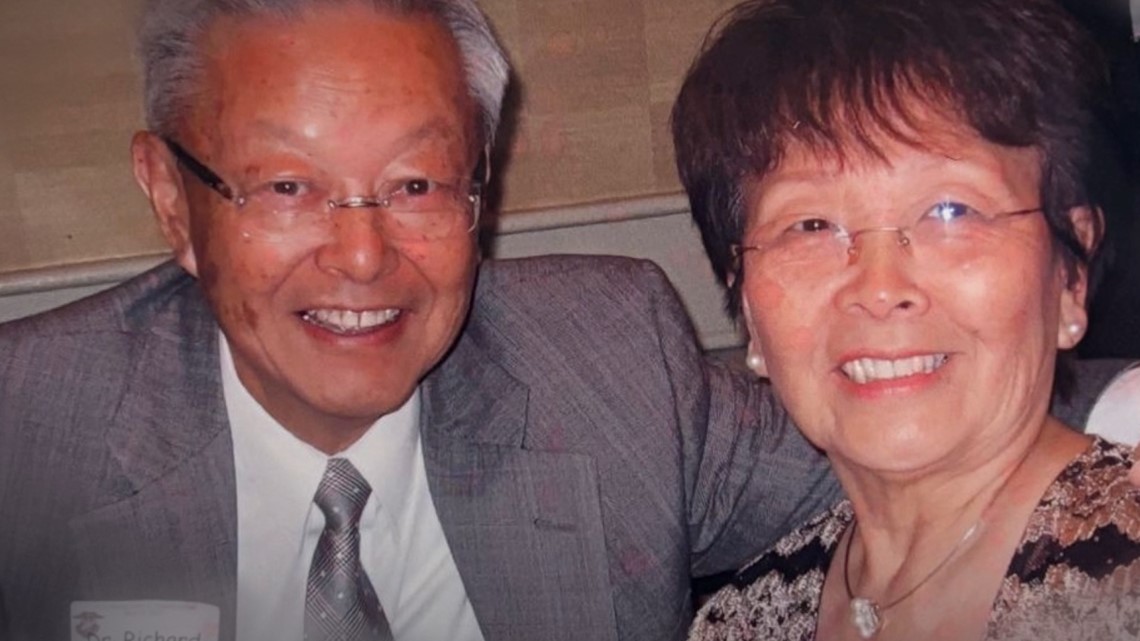
12News on YouTube
Catch up on the latest news and stories on our 12News YouTube playlist here.

